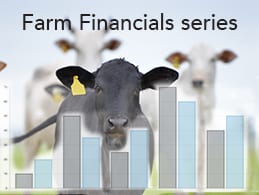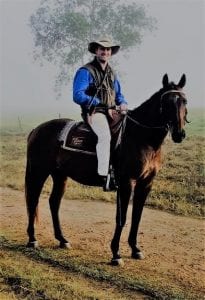Forced sales: How much do you know?
By CLANCY COX
 WITH drought ravishing most of the State, forced sales are a point of conversation for many primary producers and tax advisers.
WITH drought ravishing most of the State, forced sales are a point of conversation for many primary producers and tax advisers.
If used correctly, forced sales can provide some instant tax relief for producers. However, it is important this provision is not used haphazardly.
Understanding the implementation and management of forced sales requires serious consideration, particularly around the impacts on future year tax payments.
The ideology behind forced sales is to provide relief to primary producers who have been forced to make sales outside the normal course of business due to uncontrollable events such as drought, fire or flood.
These sales need to be tracked and identifiable as being a forced sale as opposed to simply being part of the normal course of business. Justifications such as destocking because of lost pastures (whether caused by drought, fire or flood) would generally satisfy the requirements of the sales being forced.
It is important to note forced sales are a tax deferral not a tax offset or exemption. Simply put, it defers the profit from the current year forced sales to future years. When and how it’s assessed is dependent on which election is made.
There are two types of elections which can be made under the legislation:
- In the first election, profit on forced sales is removed from the assessable income for the financial year in which the forced sale is made. An election is made to bring in 1/5th of the profit in each of five years, beginning with 1/5th being brought in the current financial year and then the succeeding four years. For example, if a primary producer were to have profit on forced sales totalling $50,000 for the year, and made this form of election, $10,000 would be assessed in the current year (i.e. the year of the forced sale) and then $10,000 would be assessable in each of the next four years. Under this election, the amounts are certain and fixed with no opportunity to vary the amount in accordance with future seasonal conditions.
- The second election allows more discretion around how the force sales are managed. Similar to the above, under this election the profit on forced sales is removed from the assessable income in the financial year in which the forced sale is made. However, no amount is required to be brought back to account in that same year. Under this election, the forced sales can be brought back in the current and next five years following the forced sale. Where the primary producer purchases replacement stock in that time, the purchase price is mandatorily reduced by the forced sales using a prescribed formula. In addition, the primary producer has discretion to bring amounts to account over this time provided there are natural increases in livestock in that year. The benefit of this election is there is no fixed amount that is required to be brought in year on year, and over the coming years as livestock is replaced, the forced sale can be used to reduce the cost of the replacement stock. Where there are no purchases, but natural increase of stock, an amount can be brought to account discretionarily. Any remaining balance on the forced sales must be brought to account at the end of the five-year period.
It is important to note that inappropriate management of forced sales can lead to an unforeseen tax burden in future years.
Forced sales are a deferral provision only and as such, will eventually be assessed, albeit at a potentially lower rate of tax than if the total amount was included in the current year of income.
Spreading the forced sale over the succeeding years means the portion included in the later years may well be taxed at a lesser marginal rate depending upon the taxpayer’s circumstances in that year. However, it should be noted this may also be at a higher rate of tax.
Another benefit of the forced sales provisions is that the cash received now can be used immediately whilst tax on that sale is deferred to a future date. It is worth bearing in mind however, that since the tax is deferred, an allowance should be made in cash management to have those funds available for a future tax liability, which could extend as far out as five years.
The temptation is to spend the funds now, forgetting there is a potential future tax liability.
With most drought periods extending for long time, it is worth noting that it is possible to have forced sales elections across many years. Getting the timing and logistics around the use of the forced sales provision is essential to ensure the maximum possible benefit to a primary producer.
About the Author:

Clancy Cox
Clancy Cox is a fourth-generation cattle farmer from the Cox and Atkinson lineages. His great-grandfather Monty Atkinson was instrumental in developing the droughtmaster herd which is still incorporated in the family operation today. Clancy was born and raised on “Glensfield Station,” a cattle station 45km west of Mackay. The family operation runs 10,000 head of cattle for breeding and fattening across three properties.
Clancy has a unique understanding of the agribusiness sector, combining his involvement in the family operation with skills he has developed as a Senior Accountant at PVW Partners.
Clancy is passionate about growing regional Australia.
Disclaimer
Information provided in the article is of a general nature and is intended for informative purposes only. It does not take into account personal financial circumstances. Tailored professional advice should be sought before acting on any of the information contained above.
